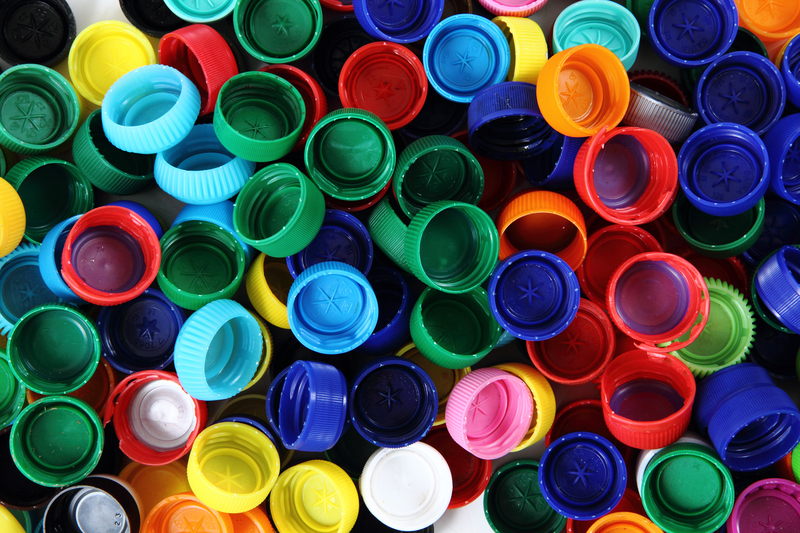Eco-Conscious Ways to Get Rid of Used PPE: A Comprehensive Guide
The surge in personal protective equipment (PPE) usage--from face masks and gloves to gowns and face shields--during the global pandemic has left an unprecedented environmental footprint. Disposing of used PPE irresponsibly can lead to pollution, threaten wildlife, and exacerbate the planet's existing waste management challenges. It is crucial to adopt eco-friendly ways to dispose of PPE to minimize environmental impact and promote sustainability.
In this article, we explore eco-conscious methods for getting rid of used PPE, from innovative recycling solutions to sustainable alternatives and community initiatives. Whether you are an individual, a business, or part of a healthcare facility, these strategies will help you make informed decisions for a cleaner and safer world.

Understanding the PPE Disposal Challenge
Personal protective equipment, including single-use face masks, nitrile gloves, and disposable gowns, is often made from non-biodegradable plastics such as polypropylene and polyethylene. Improperly discarded PPE not only fills up landfills but also ends up in waterways and natural habitats, posing a threat to both wildlife and human health. The rise in PPE usage highlights the urgent need for
Environmental Impact of Used PPE
- Landfill Overflow: Billions of single-use masks and gloves are disposed of every month, contributing significantly to landfill waste.
- Plastic Pollution: When discarded improperly, PPE breaks down into microplastics that contaminate soil and water.
- Harm to Wildlife: Animals can get entangled in PPE or ingest it, resulting in injury or death.
- Public Health Concerns: Used PPE can be potentially infectious, posing a health risk if not handled and disposed appropriately.
Given these critical concerns, adjusting our approach to eco-responsible PPE waste management has never been more important.
Eco-Conscious Options for PPE Disposal
1. Use Designated PPE Disposal Bins
Many public places and healthcare facilities have implemented special bins for PPE waste collection. These designated containers are designed to prevent contamination and ensure that PPE is directed to the proper waste processing facilities, reducing the chances that it ends up as litter or in regular landfill streams.
- Look for bins labeled "PPE Only" or similar phrasing.
- Ensure that used PPE is securely bagged to protect waste management workers.
2. Seek Out PPE Recycling Programs
Recycling disposable PPE is a challenge, but various innovative companies and organizations now offer specialized PPE recycling
Programs enable you to send your used PPE to facilities where they are processed into new products or converted into energy.
- TerraCycle: An international leader in hard-to-recycle waste. Their Zero Waste Boxes accept masks, gloves, and other PPE from homes, offices, and institutions. The collected items are sanitized and recycled into plastic pellets.
- Local Initiatives: Some councils and environmental groups offer drop-off points or collection drives for used PPE recycling. Check your municipality's website or local news for updates.
- Hospital Partnerships: Large healthcare providers sometimes collaborate with recycling companies for bulk PPE diversion from landfills.
Note: Always check that items are clean of visible biological contaminants before sending them for recycling. Biohazardous PPE must be handled through approved channels.
3. Switch to Reusable PPE Wherever Possible
Reducing single-use PPE is a core aspect of eco-conscious waste management. By using reusable masks, gloves, and gowns--washed and sanitized between uses--you dramatically lessen waste generation.
- Fabric Masks: Opt for cloth face coverings that are machine washable and can last for dozens of uses. Many brands now offer masks made from organic cotton or recycled materials.
- Reusable Gloves: Where appropriate (and when not handling hazardous materials), choose gloves made from materials like latex or rubber that can be cleaned and reused.
- Washable Protective Gowns & Aprons: Healthcare and service industry workers can now access durable PPE alternatives that withstand repeated laundering.
4. Properly Dispose of Contaminated PPE
When PPE has been exposed to infectious agents, following local biohazard disposal guidelines is essential for human and environmental safety.
- Home Users: Double-bag used, contaminated PPE and seal tightly before placing in the general waste bin.
- Healthcare Facilities: Use approved biohazard containers. Work with waste management providers who use incineration or sterilization before landfill disposal.
- Do Not Litter: Never throw used PPE in public spaces, waterways, or recycling bins not intended for PPE.
5. Composting Biodegradable PPE Products
Technological advances have led to the emergence of compostable PPE options, such as:
- Bioplastic Face Masks: Made from polylactic acid (PLA) or other plant-based polymers, these begin to break down under composting conditions.
- Biodegradable Gloves: Options made from natural latex or starch-based plastics can sometimes be composted in industrial facilities.
To compost these items, check the manufacturer's instructions as conditions for biodegradation vary. Some require processing at commercial composting plants rather than in-home composters.
6. Participate in Community Clean-Up Campaigns
Communities are increasingly coming together to collect and safely dispose of PPE litter in parks, beaches, and public spaces. Volunteering at or organizing local cleanup drives not only tackles existing pollution but also raises awareness about best practices for eco-friendly PPE disposal.
Creative Reuse and Upcycling of PPE
1. Art Projects and Repurposing
Some artists and environmental advocates have found ways to incorporate clean, non-infectious PPE into art installations, jewelry, or building materials. For example:
- Creating mosaics or sculptures from masks or gloves (thoroughly sanitized first).
- Using durable PPE (like face shields) in educational models or science kits.
2. Construction and Insulation Materials
Research is underway to process shredded masks and gloves into composite building materials or thermal insulation for low-cost housing. While not yet widespread, this could be a game changer for sustainable PPE end-of-life solutions.
Reducing Future PPE Waste: Towards a Sustainable Culture
Choose Eco-Friendly PPE
- Support brands that use recycled, plant-based, or biodegradable materials.
- Advocate for innovations in PPE design, such as modular or multi-use products.
Encourage Responsible Behavior
- Share information on proper PPE disposal in workplaces and communities.
- Lead by example--discard PPE thoughtfully and encourage others to do the same.
Work With Policymakers
- Encourage local leaders to invest in PPE recycling infrastructure.
- Support environmental regulations that prioritize waste reduction and extended producer responsibility.
The Role of Technology in Eco-Conscious PPE Waste Management
Cutting-edge technology is transforming how we deal with used PPE:
- Advanced Sterilization: New methods enable safe reuse of PPE, especially in healthcare settings.
- Material Innovation: Researchers are developing PPE made from algae, hemp, or other rapidly renewable resources.
- Tracking & Sorting: Smart waste bins can identify and sort used PPE for optimized recycling.
- Energy Recovery: Some waste-to-energy plants can convert PPE waste into fuel, reducing landfill pressure.

Practical Tips for Eco-Conscious PPE Disposal at Home and Work
At Home
- Educate household members about where and how to dispose of PPE safely.
- Where possible, opt for washable masks and gloves to cut down on disposable waste.
- Participate in local or mail-in PPE recycling initiatives.
- Keep used PPE out of curbside recycling bins unless specifically accepted.
At Workplaces and Institutions
- Install clearly labeled PPE waste bins in strategic locations.
- Partner with PPE recycling vendors for regular waste collection.
- Provide staff training on how to handle and dispose of used PPE responsibly.
- Periodically review and optimize disposal policies for maximum sustainability.
Conclusion: Making Eco-Conscious PPE Disposal Second Nature
The environmental impact of PPE waste is both urgent and solvable. By embracing sustainable alternatives, leveraging recycling innovations, and spreading awareness, we can reduce pollution and promote a healthier planet. Taking these eco-friendly steps to get rid of used PPE is not just an individual responsibility; it is a collective movement towards a greener future.
Start today: Make a conscious effort to switch to reusables, support PPE recycling, and advocate for change in your community.